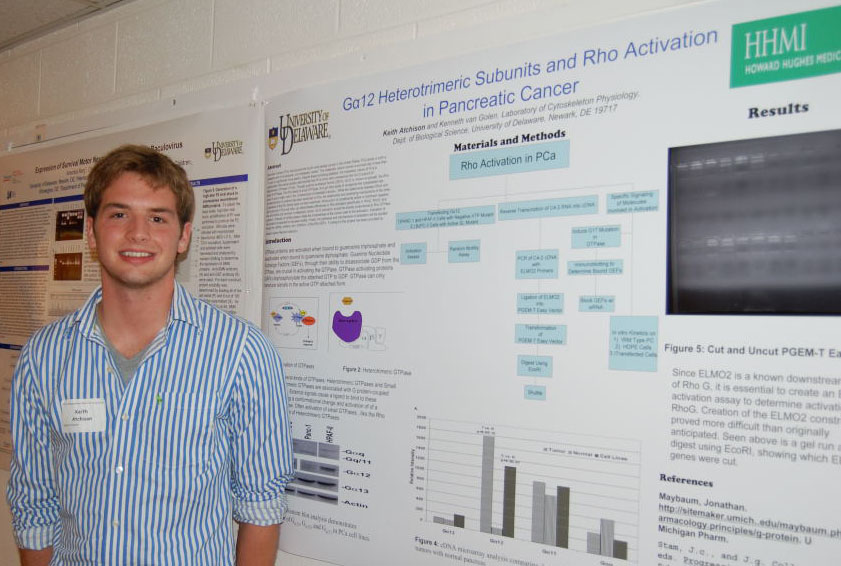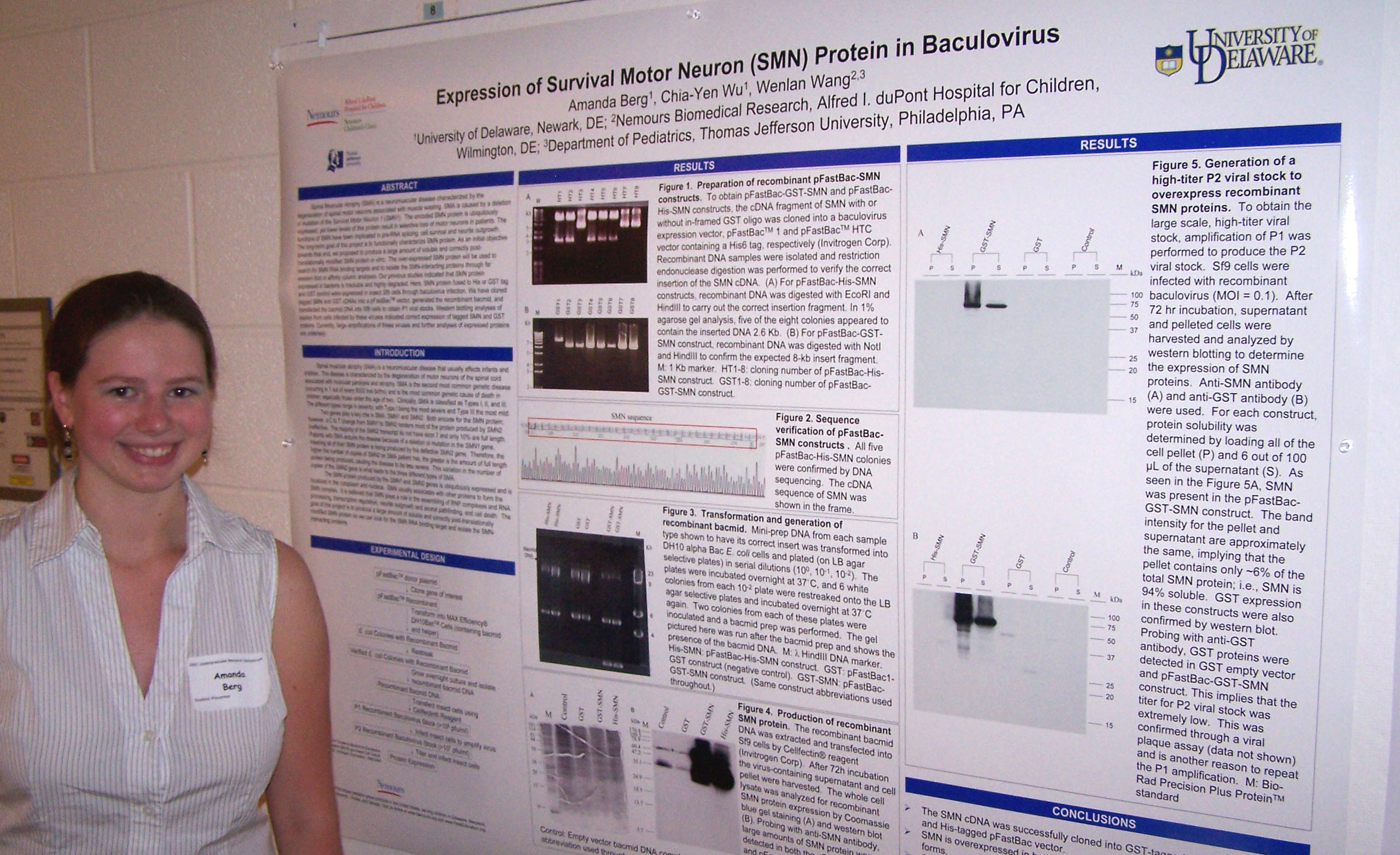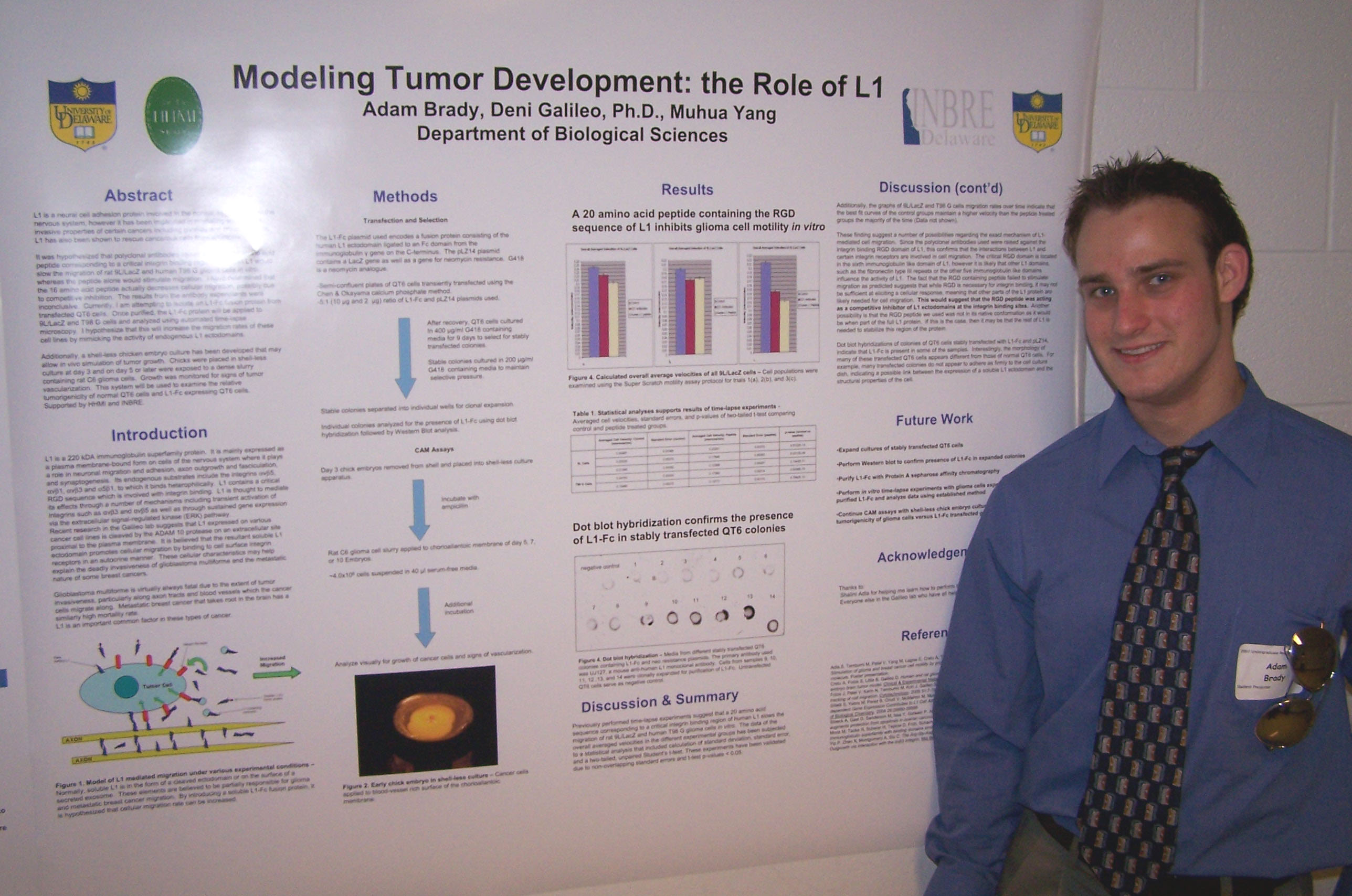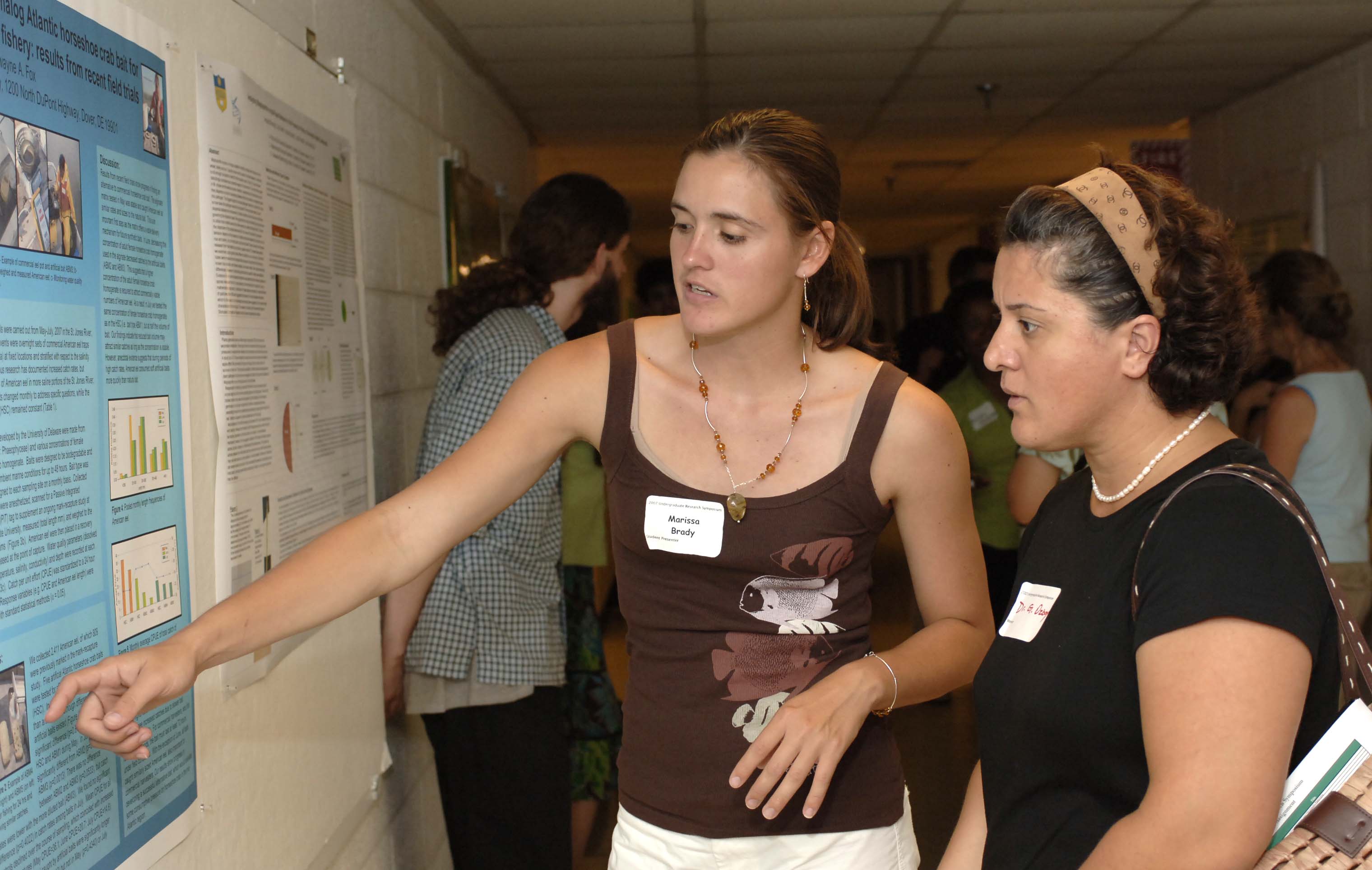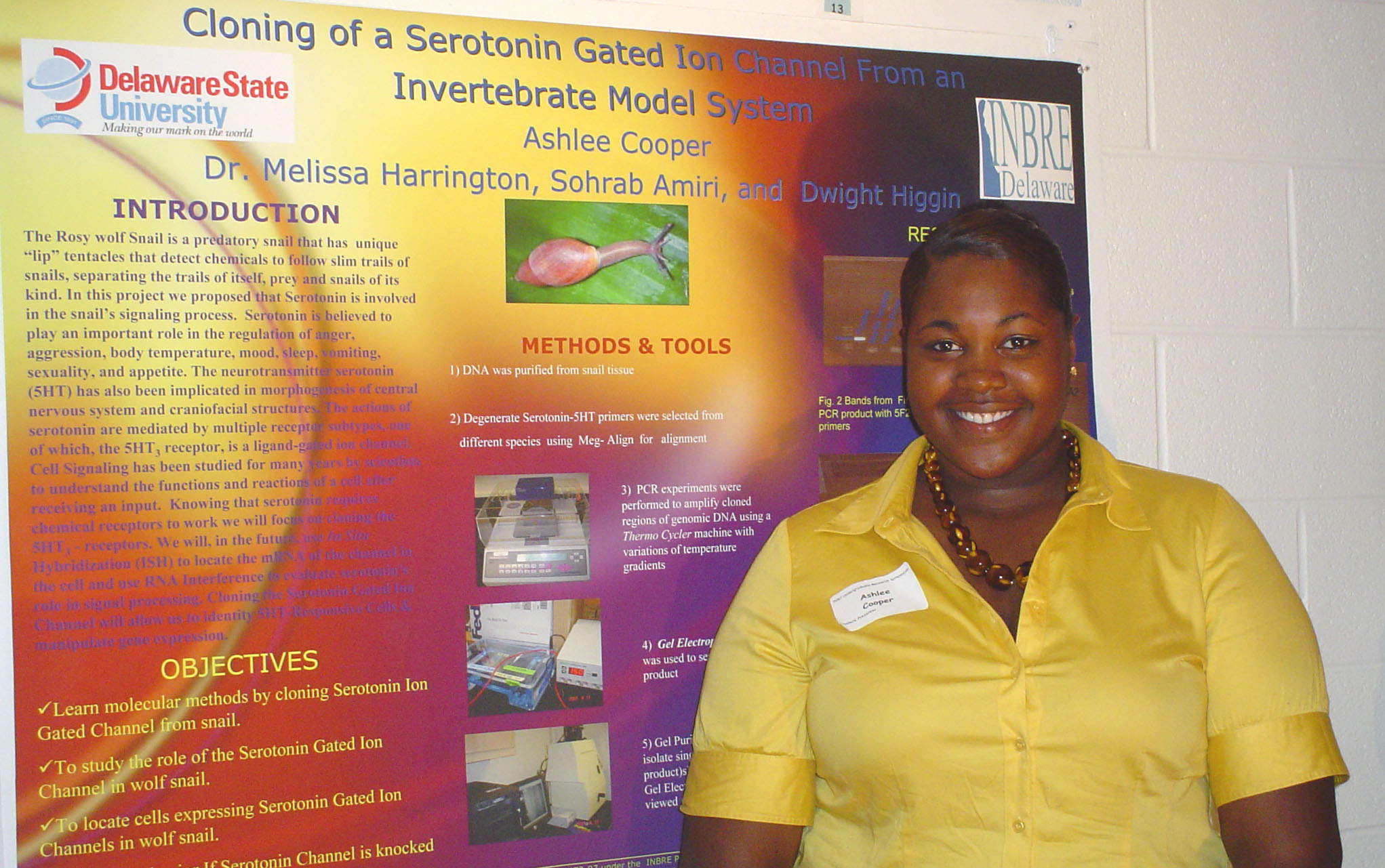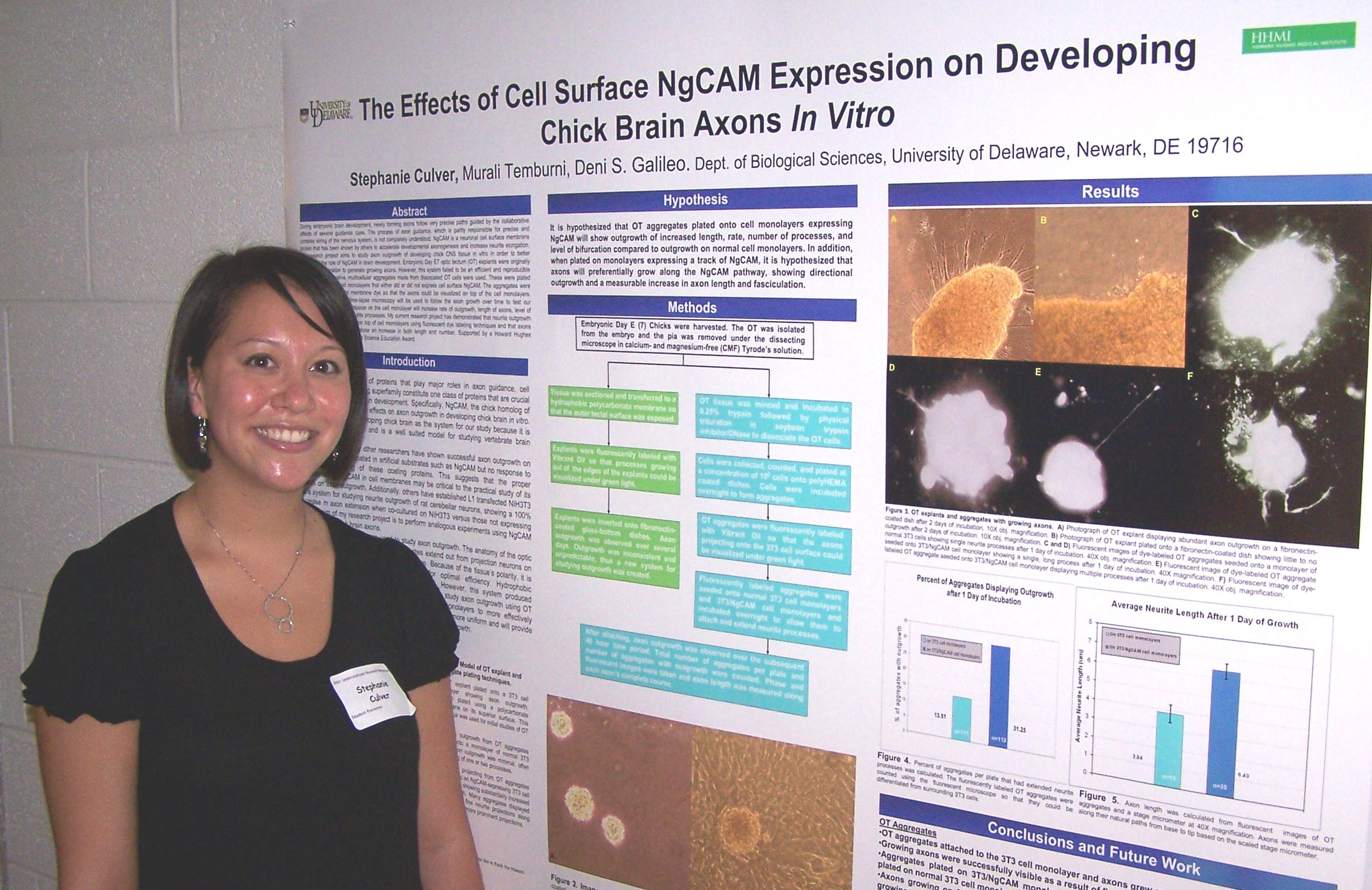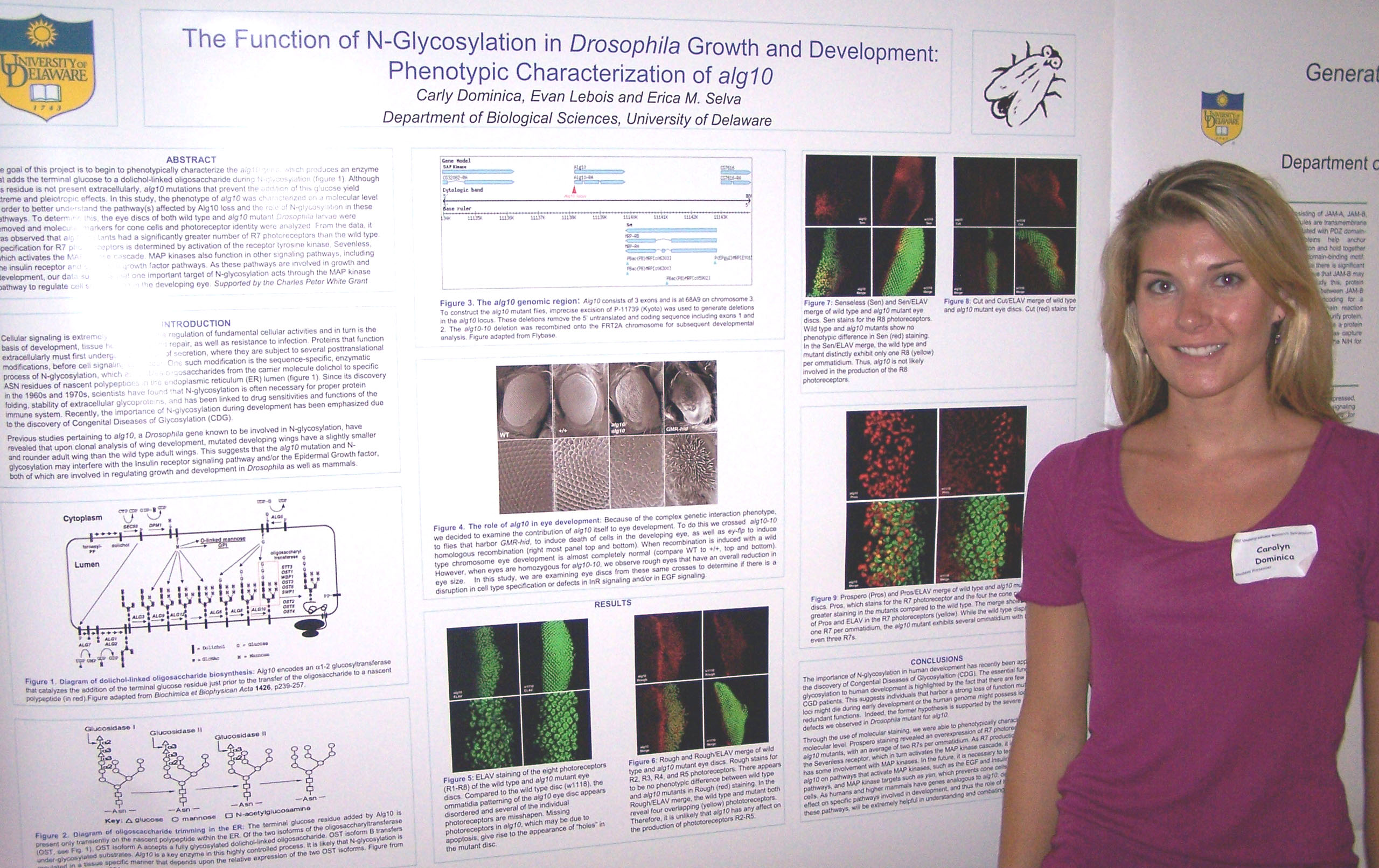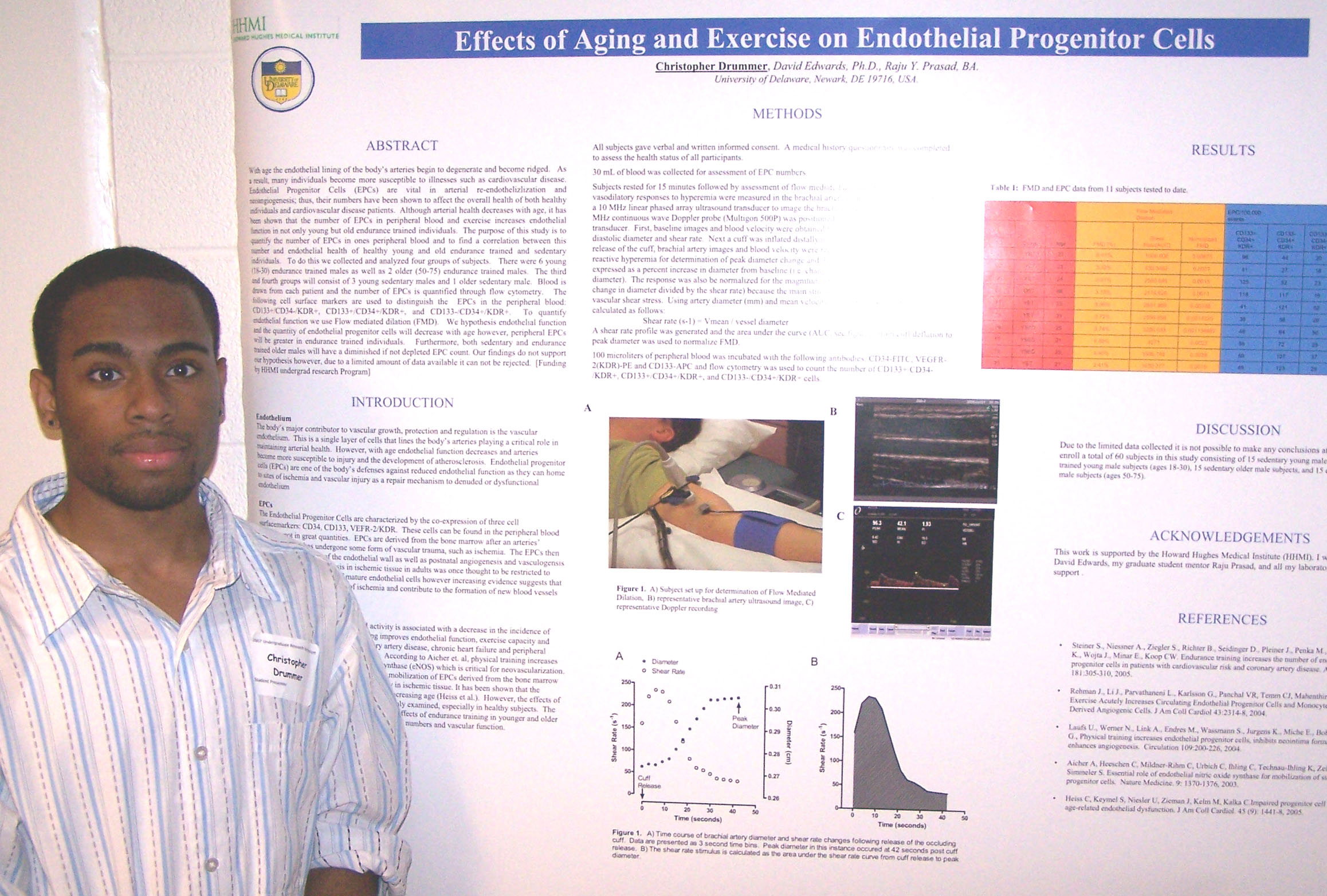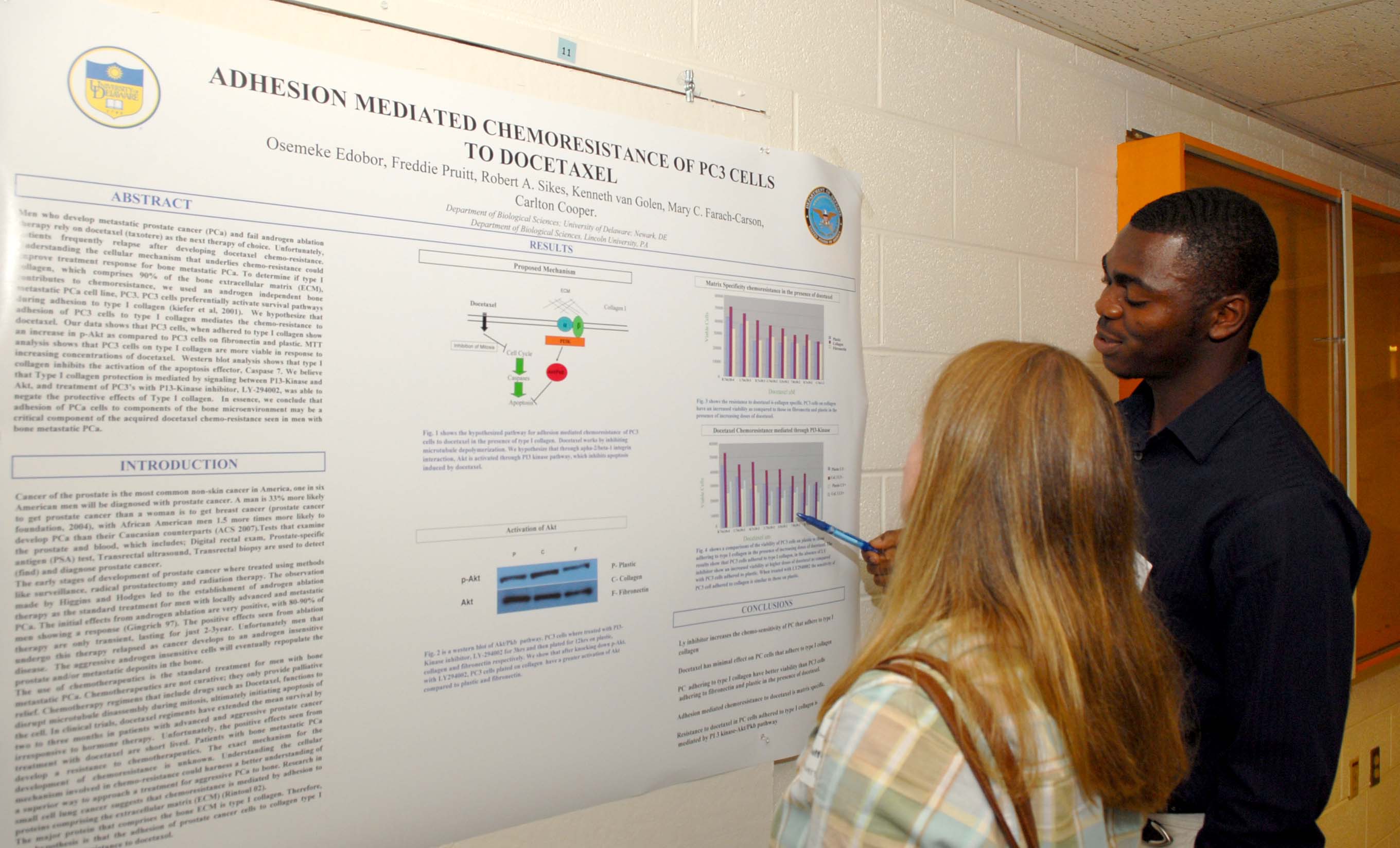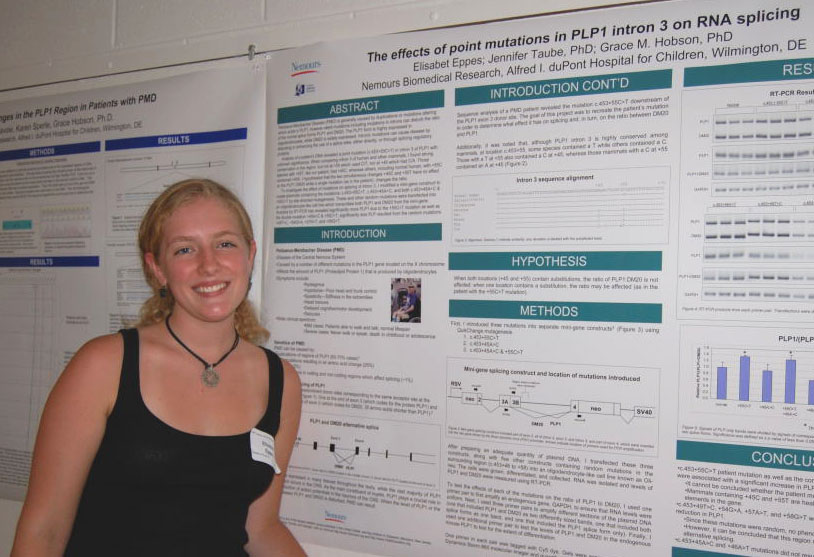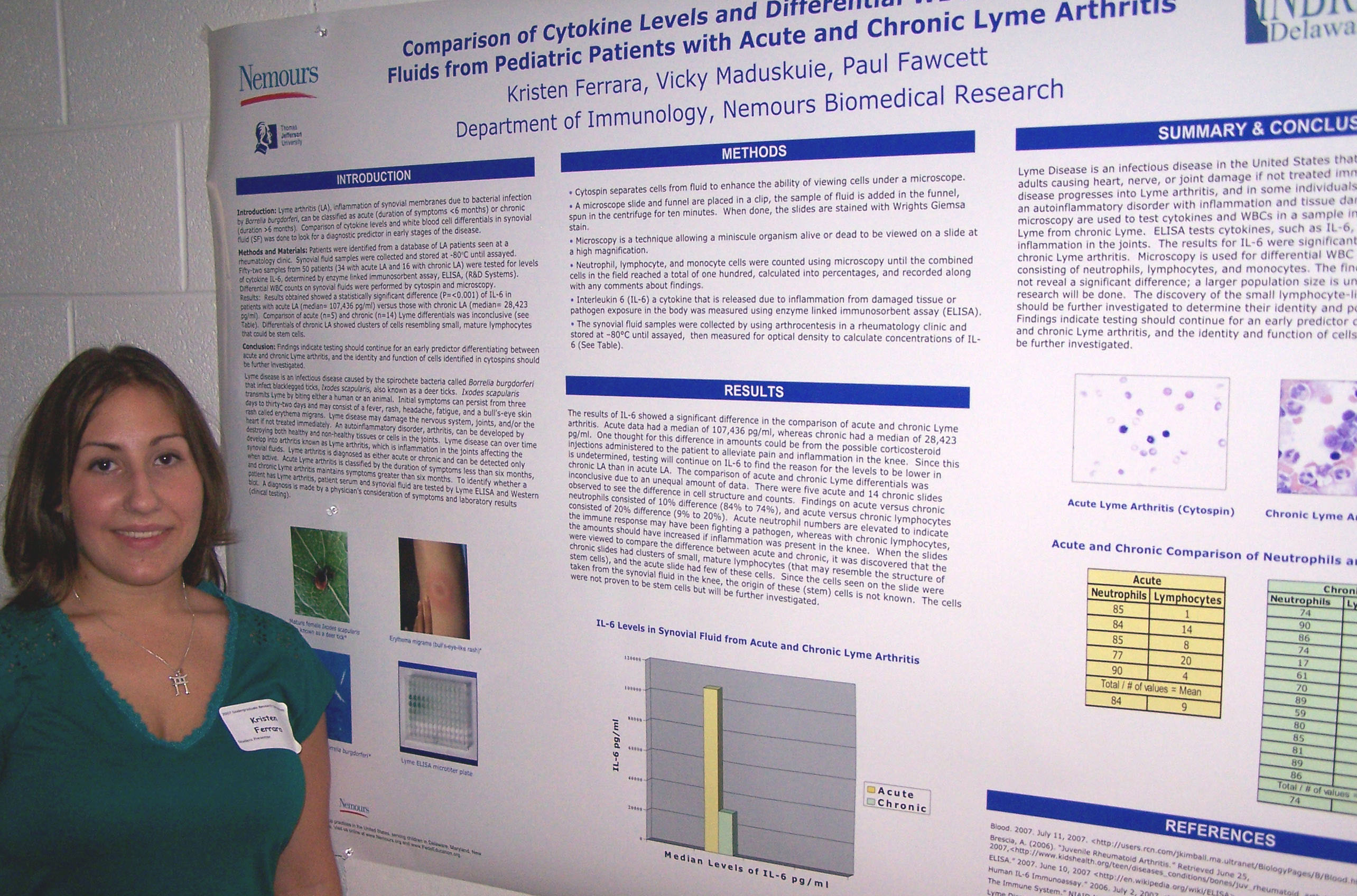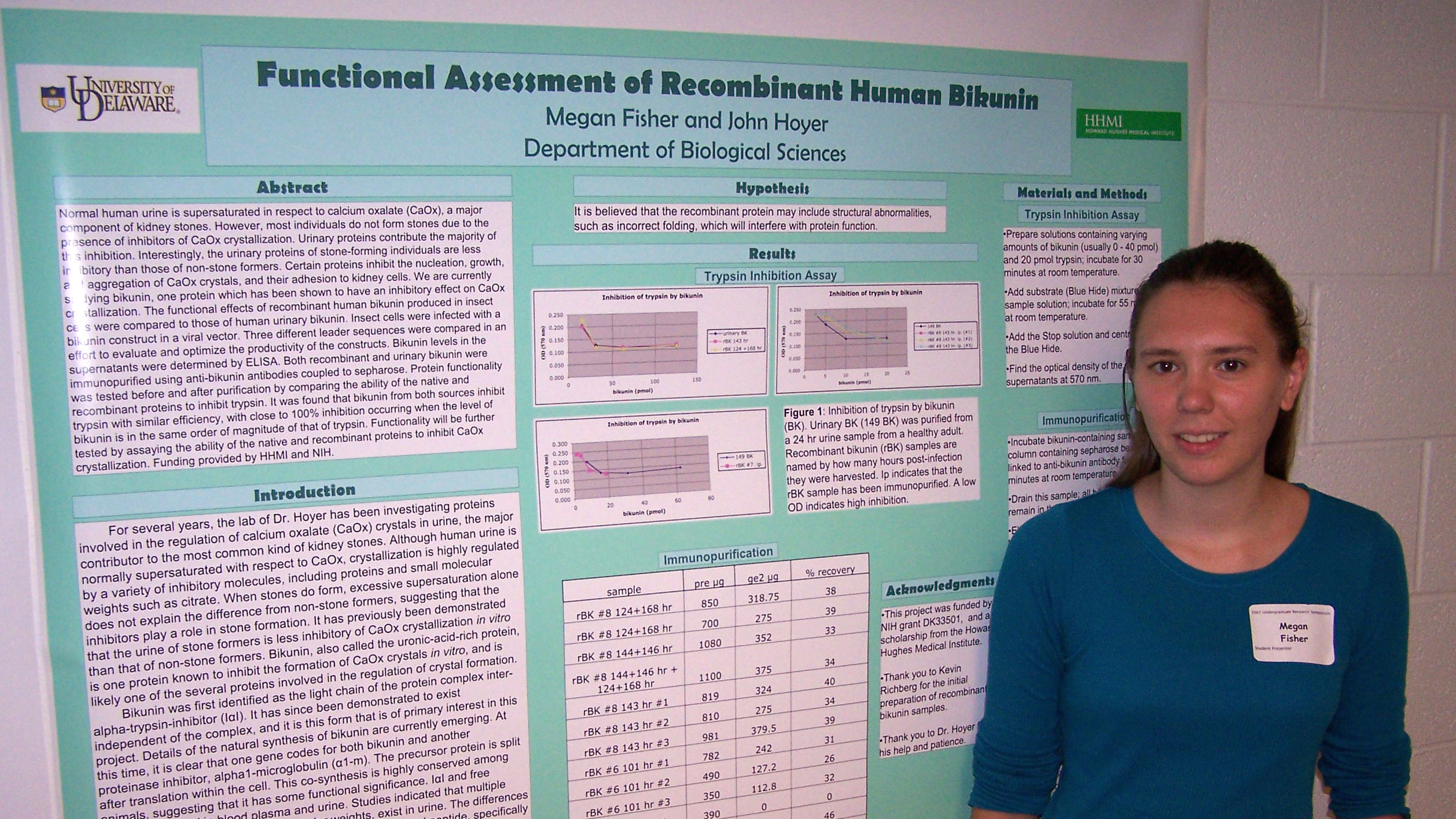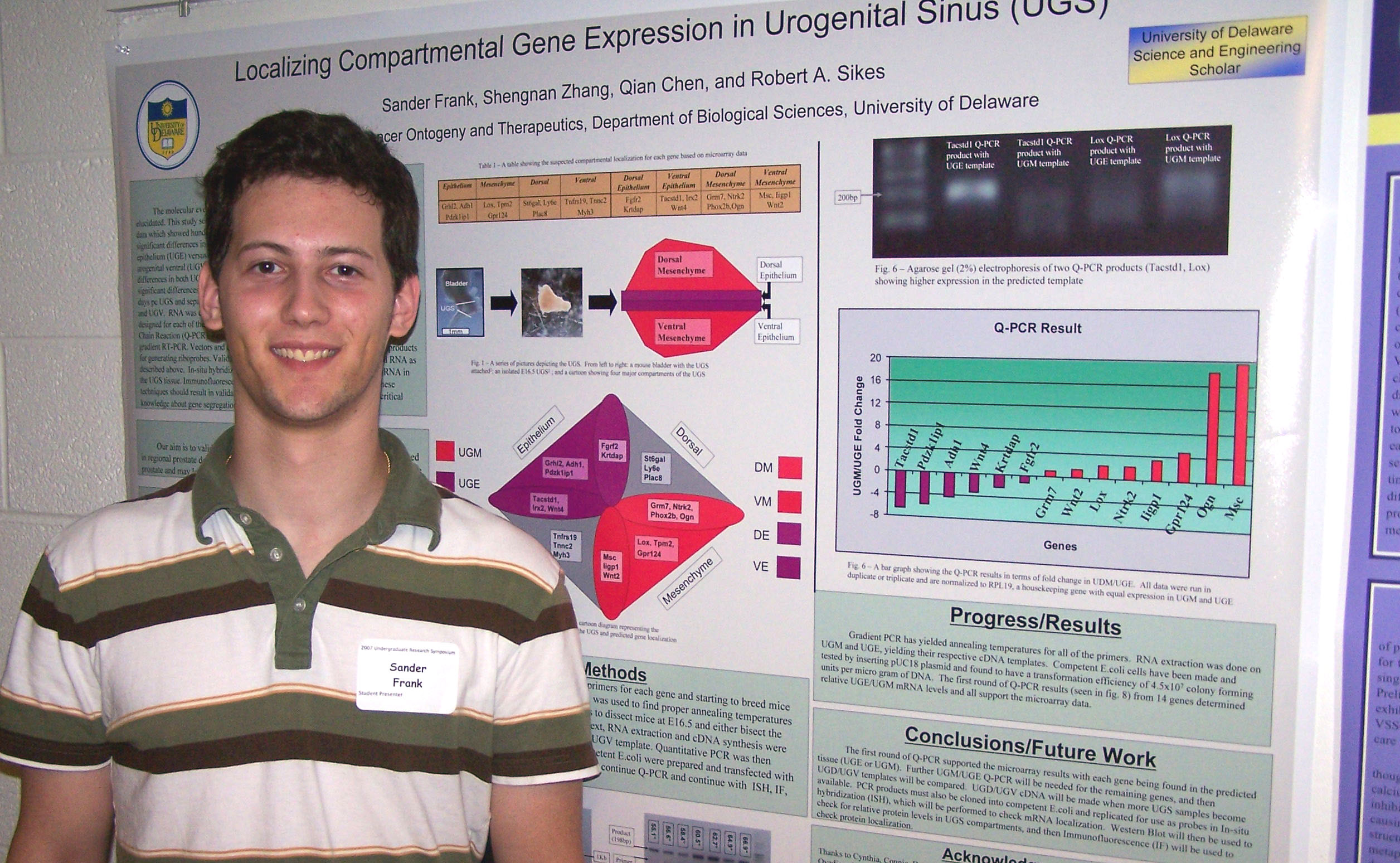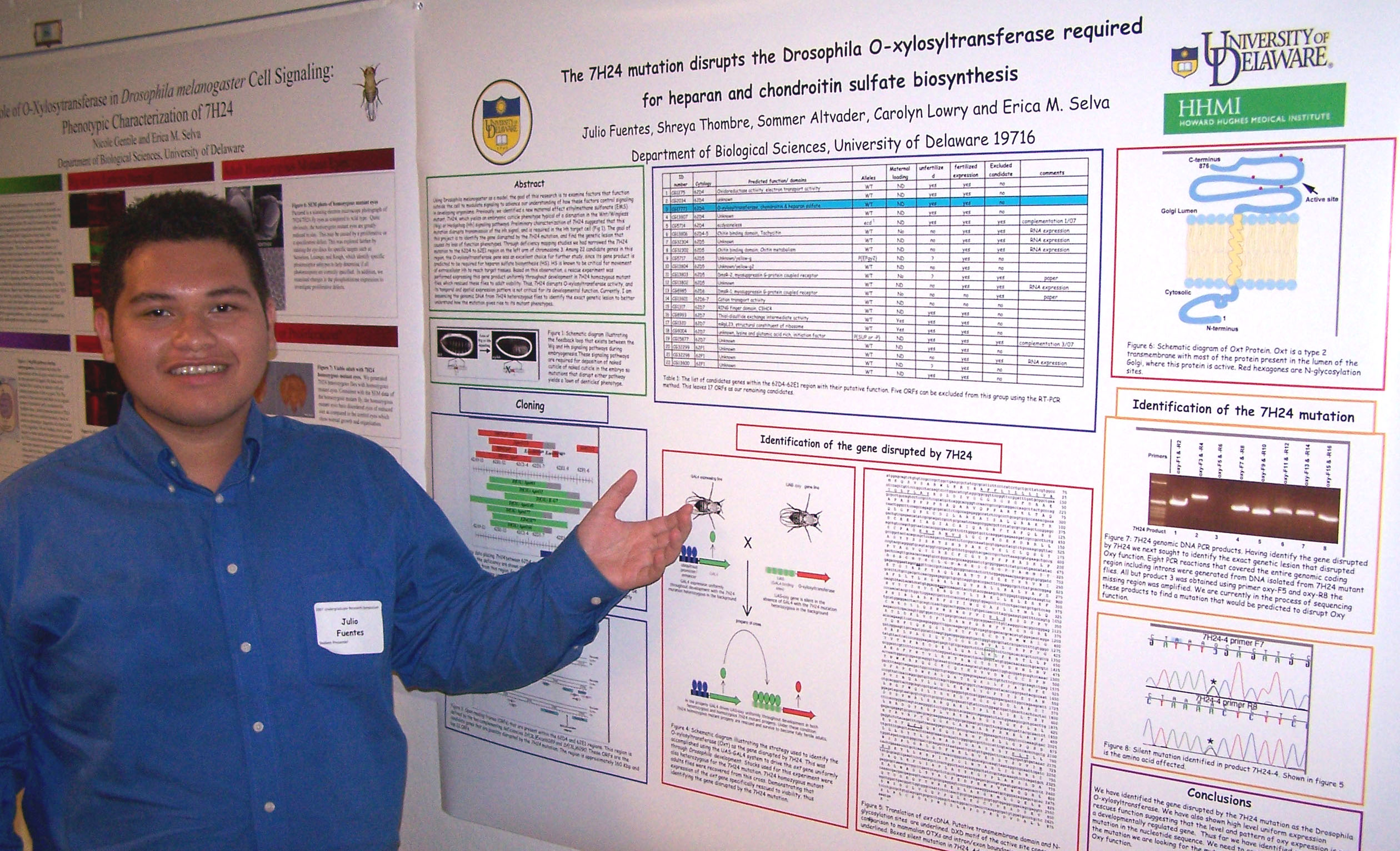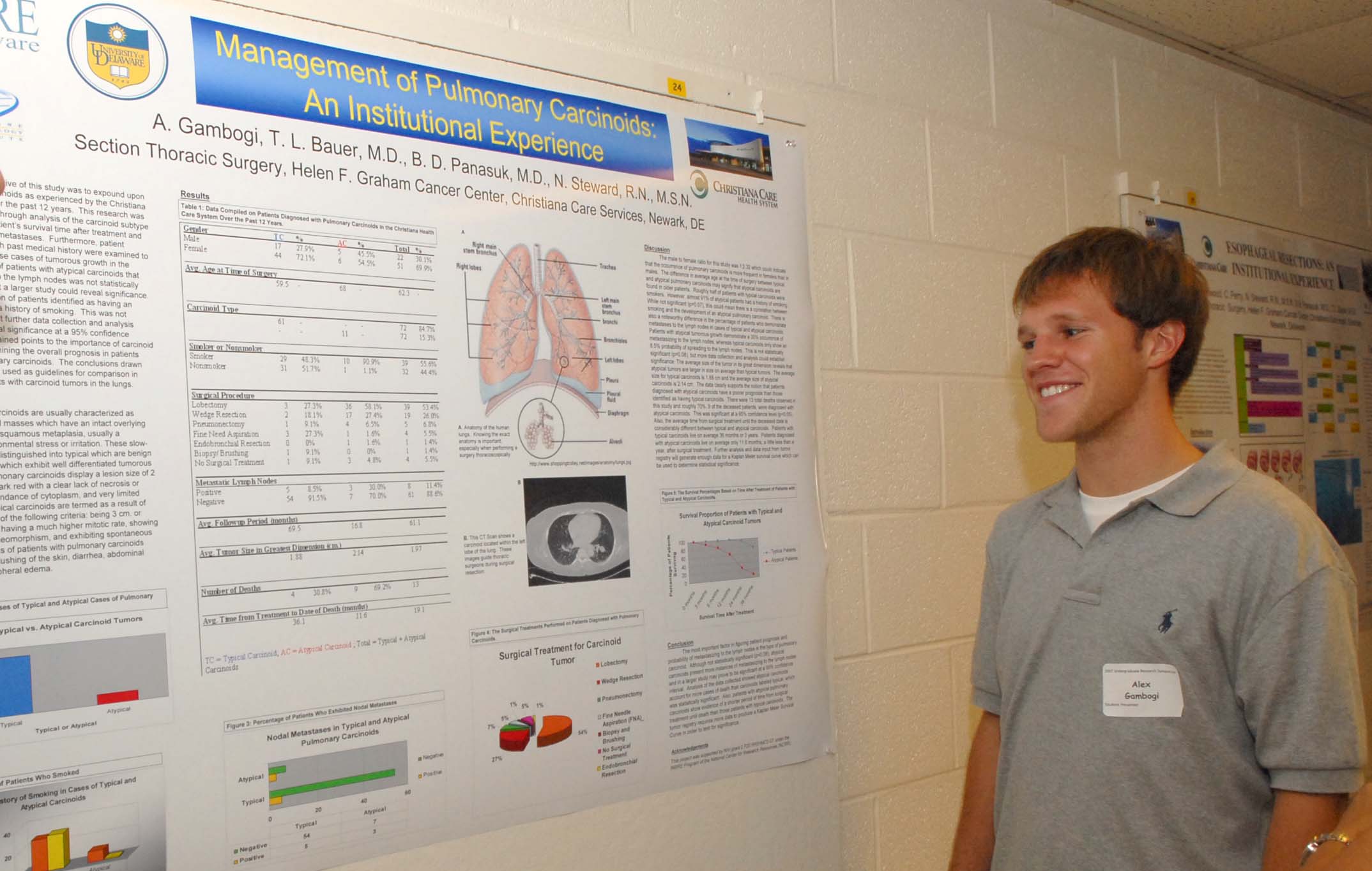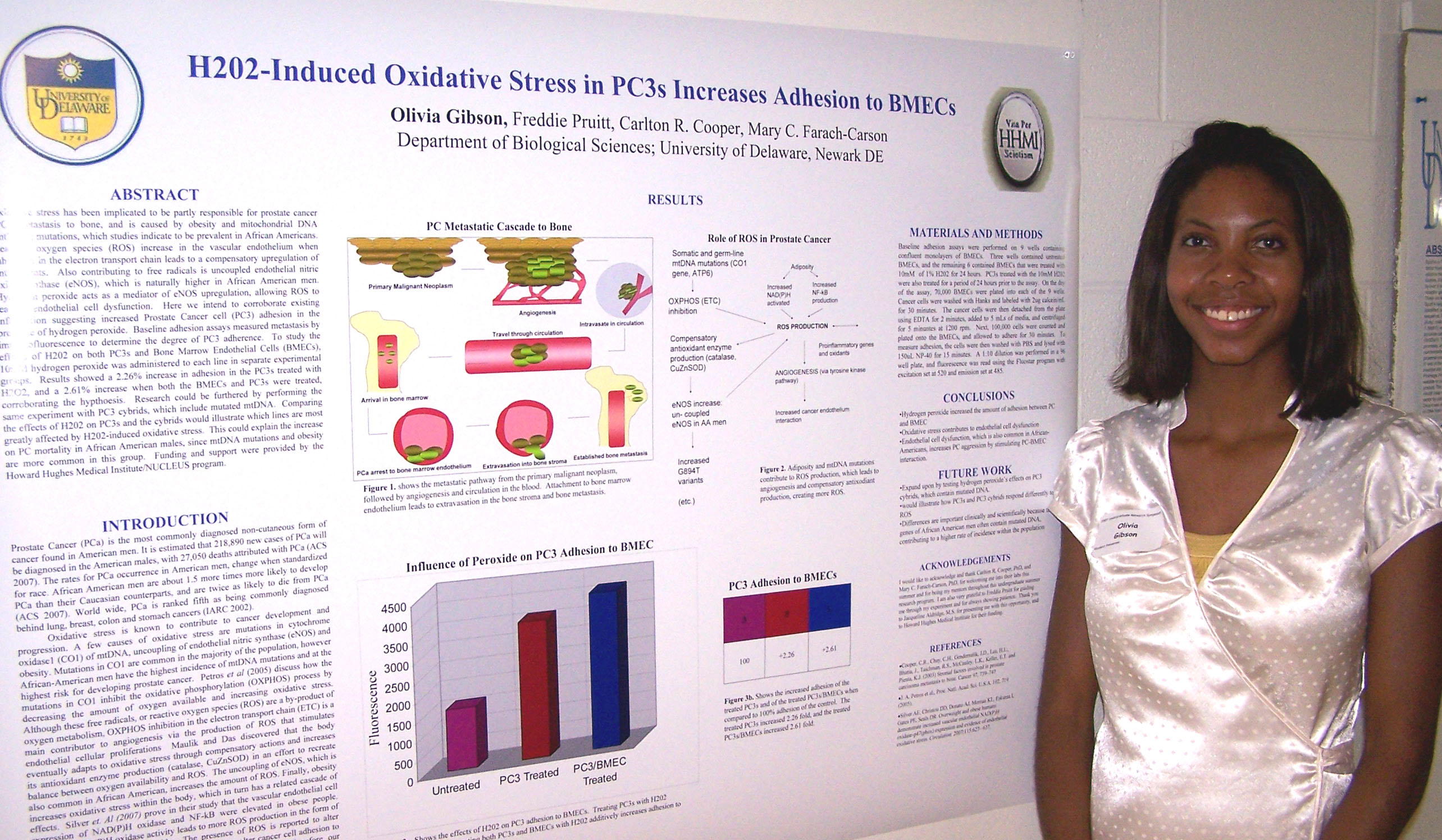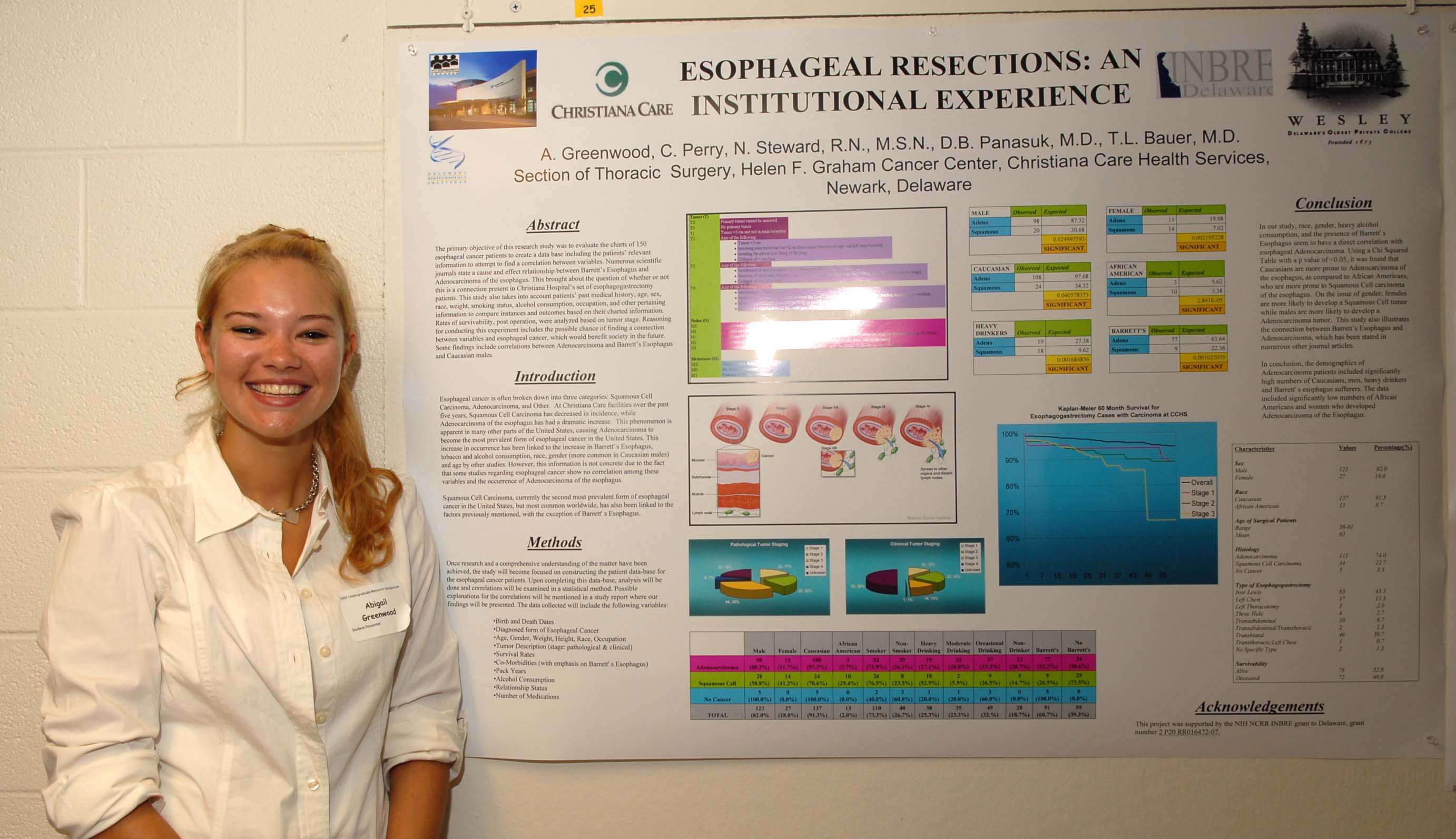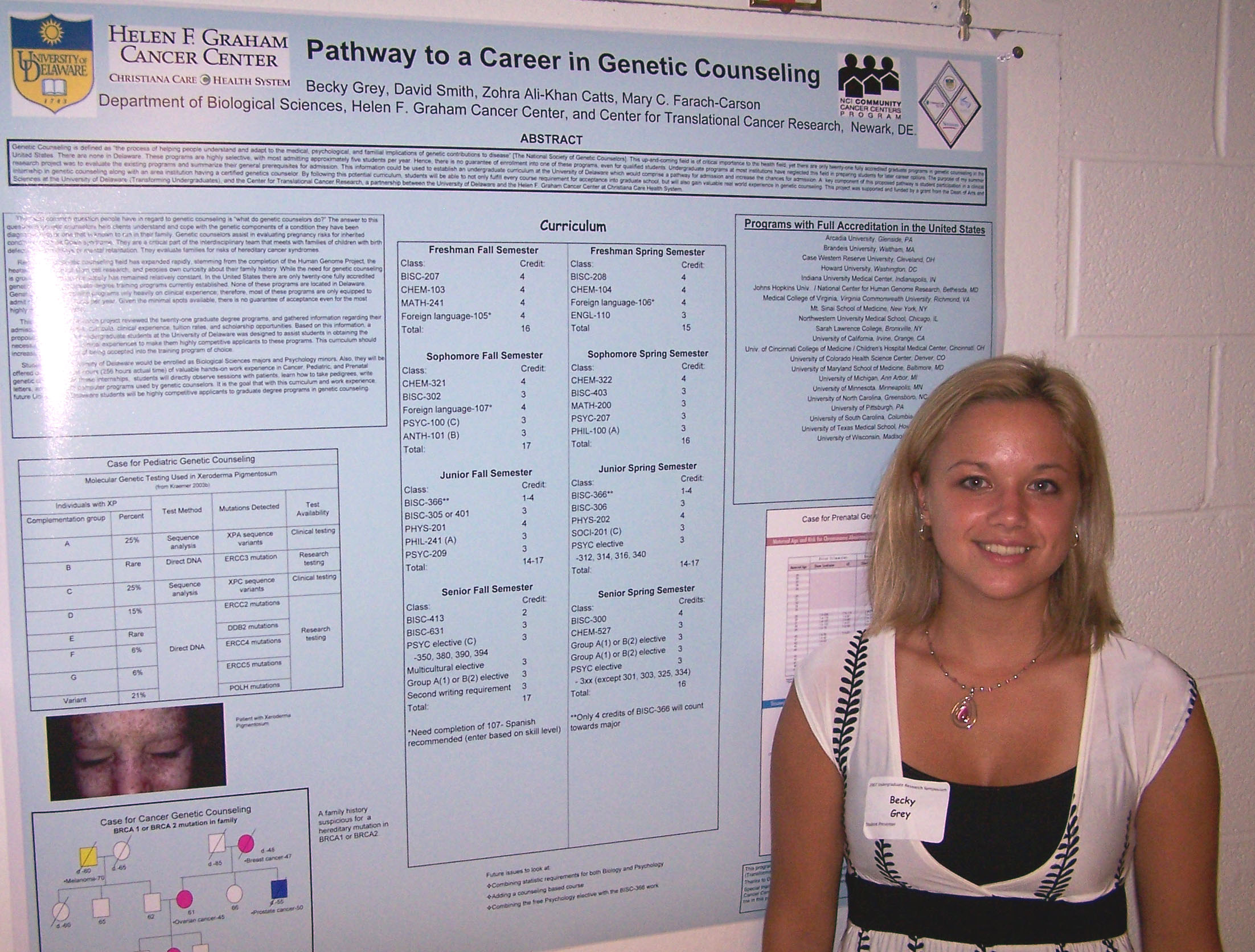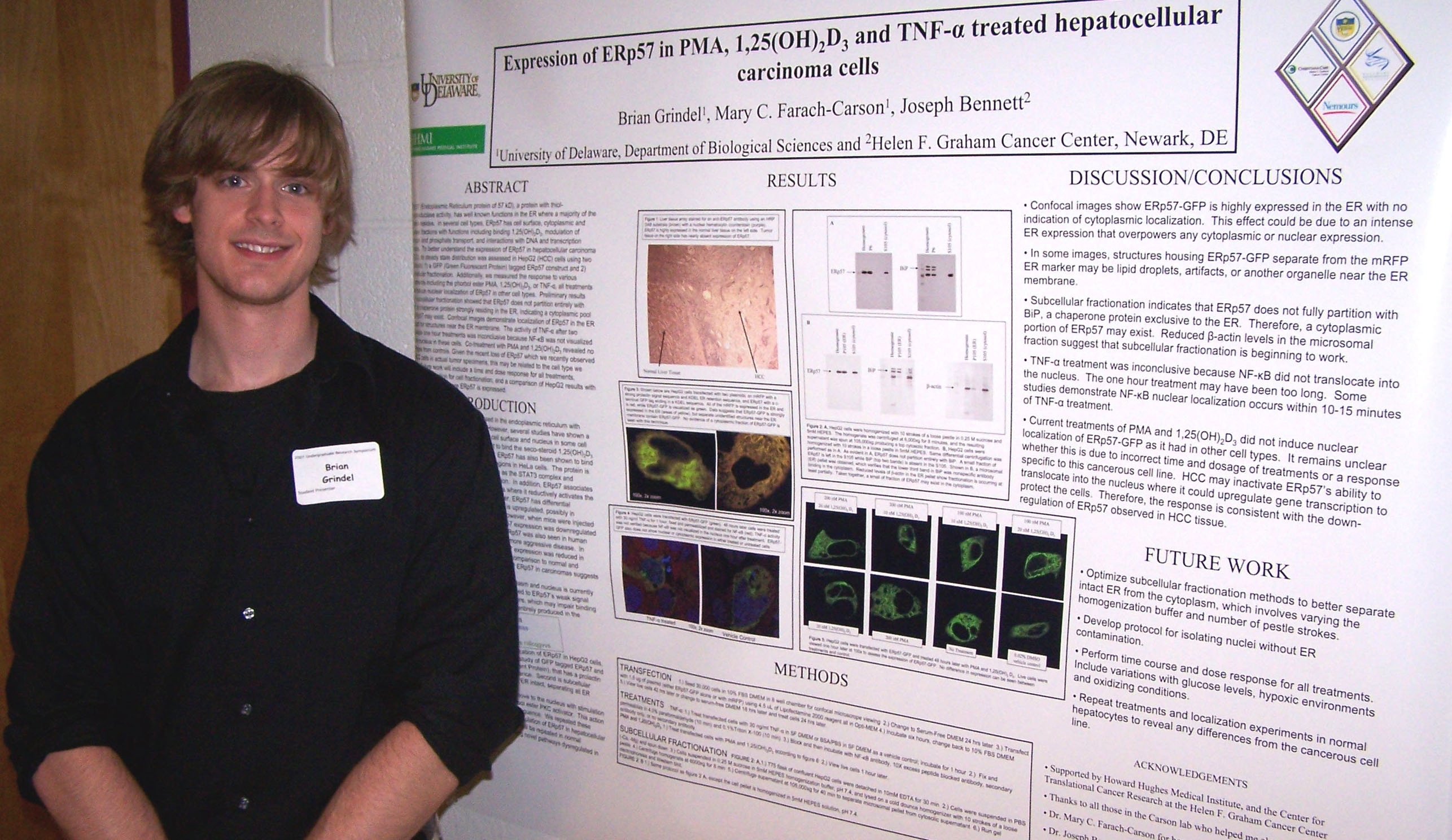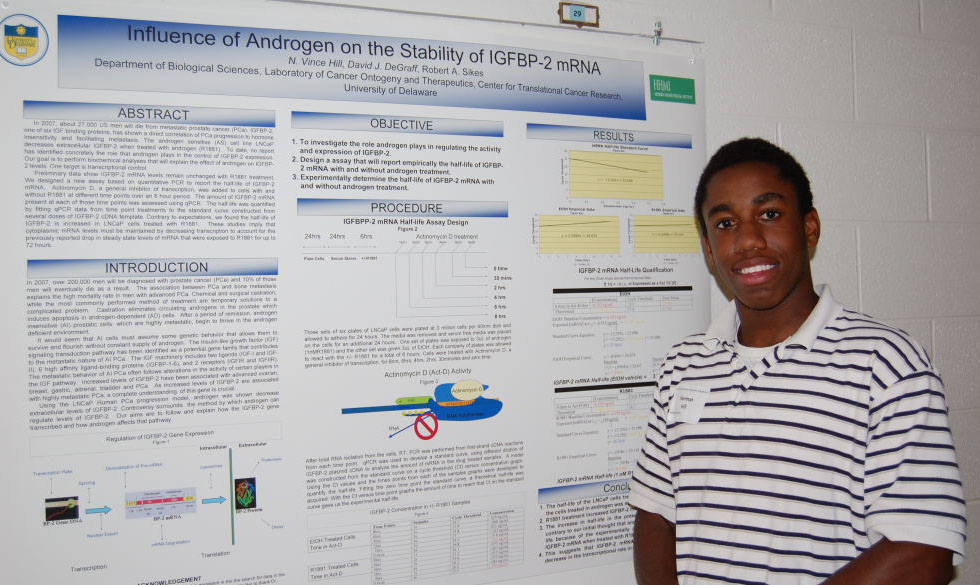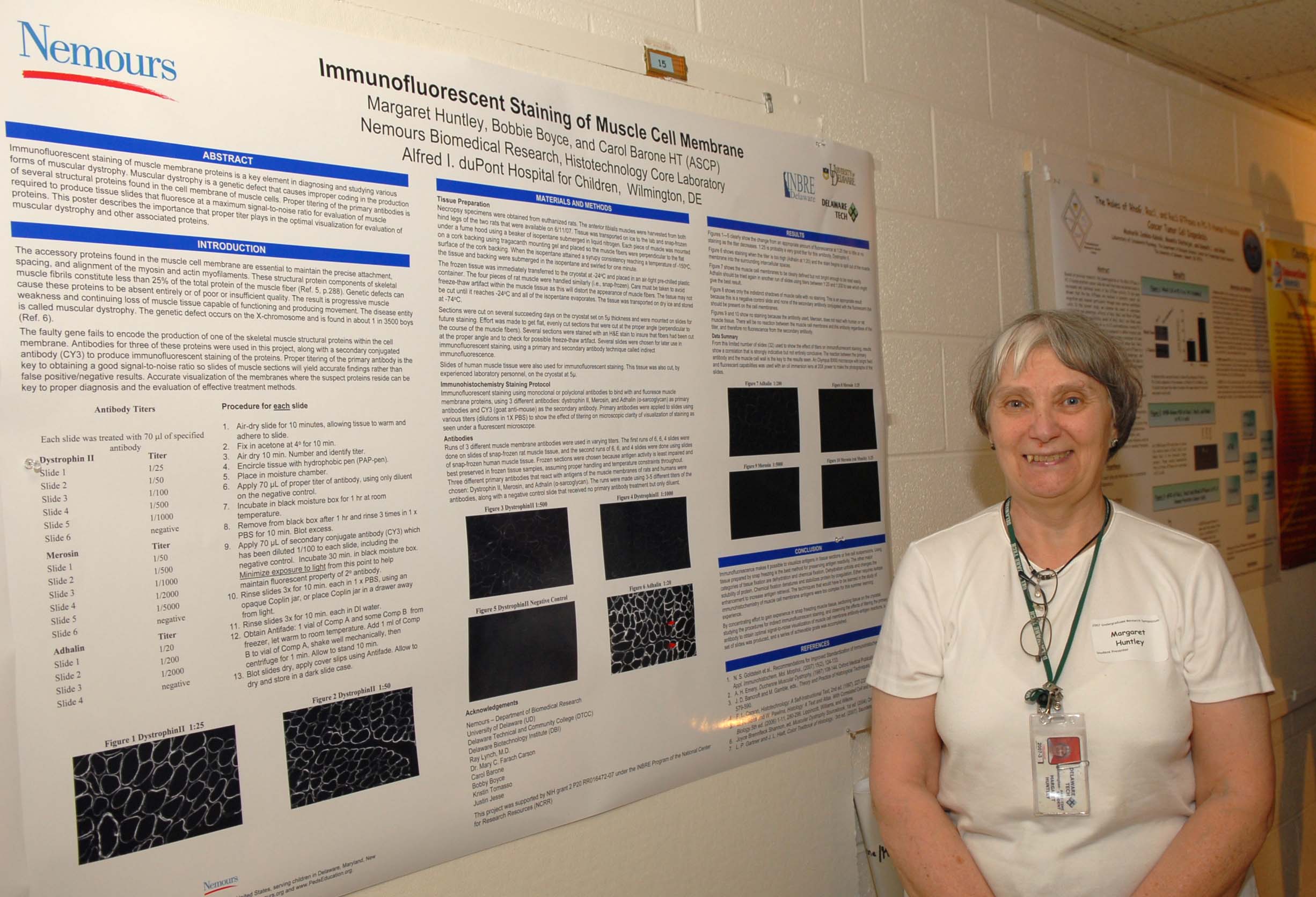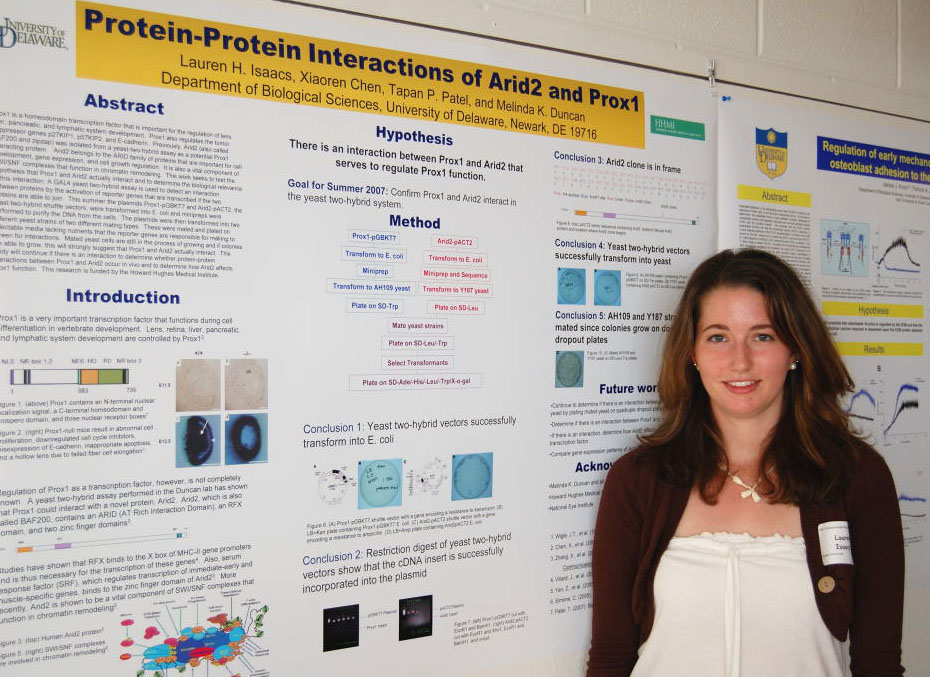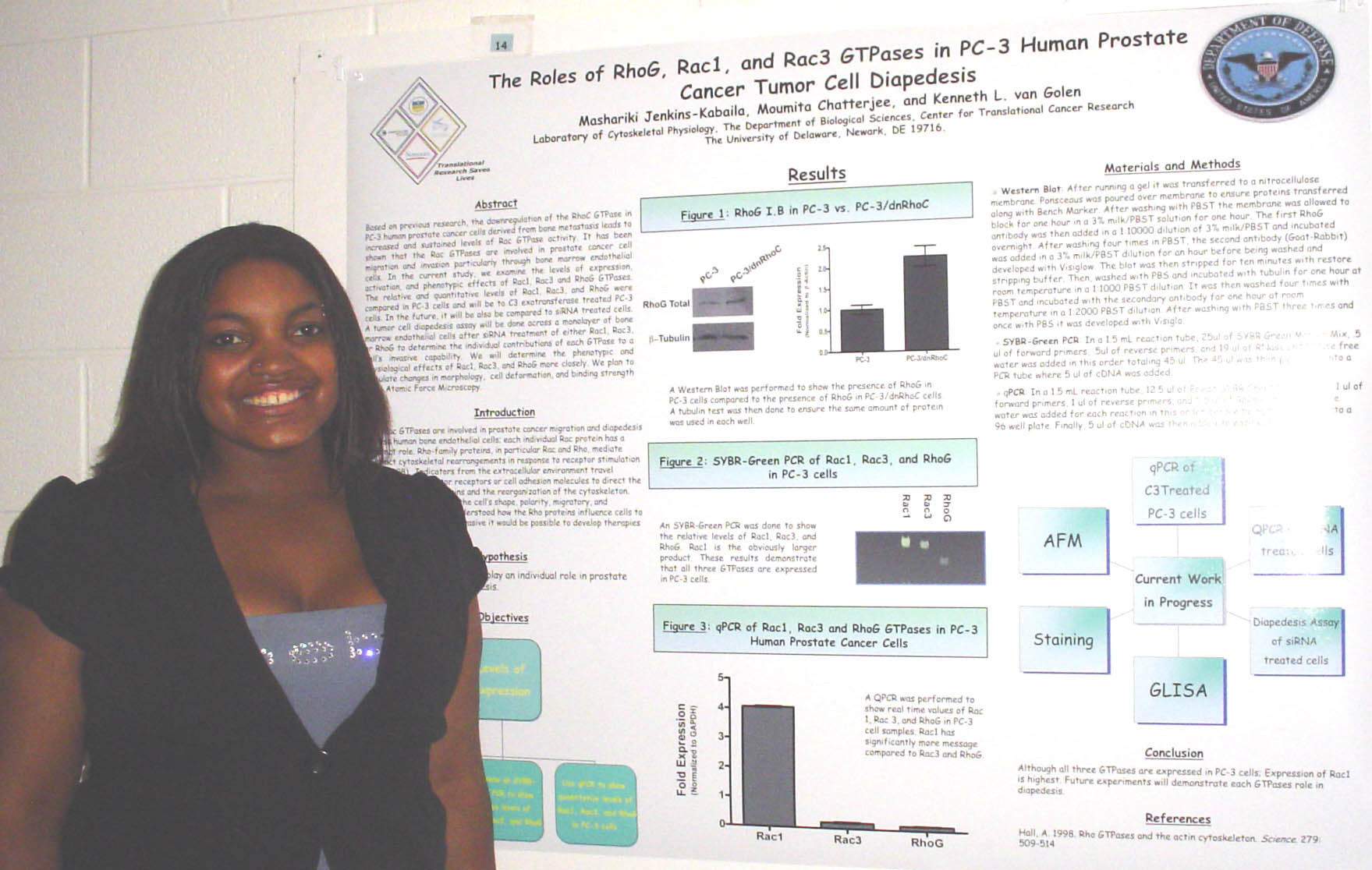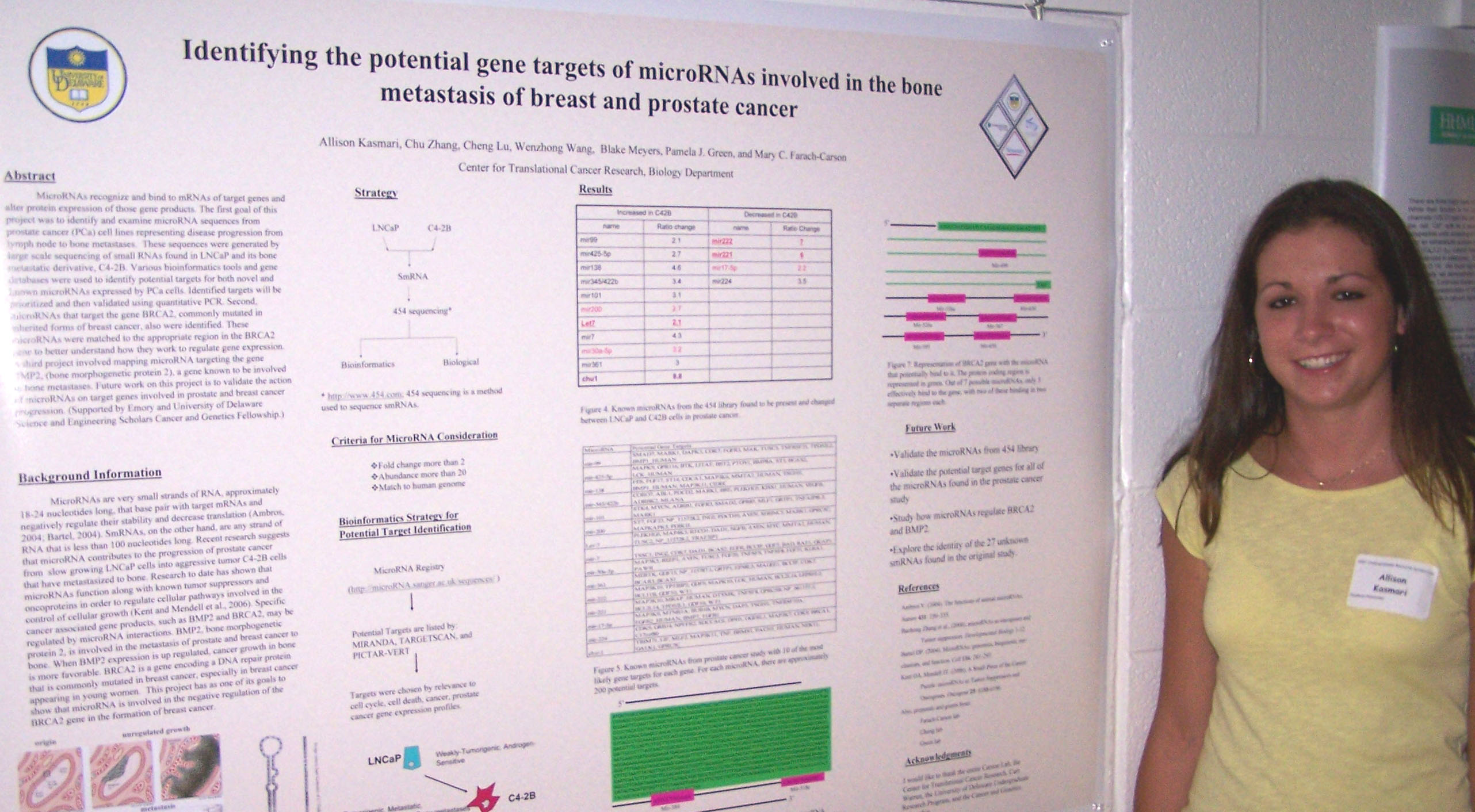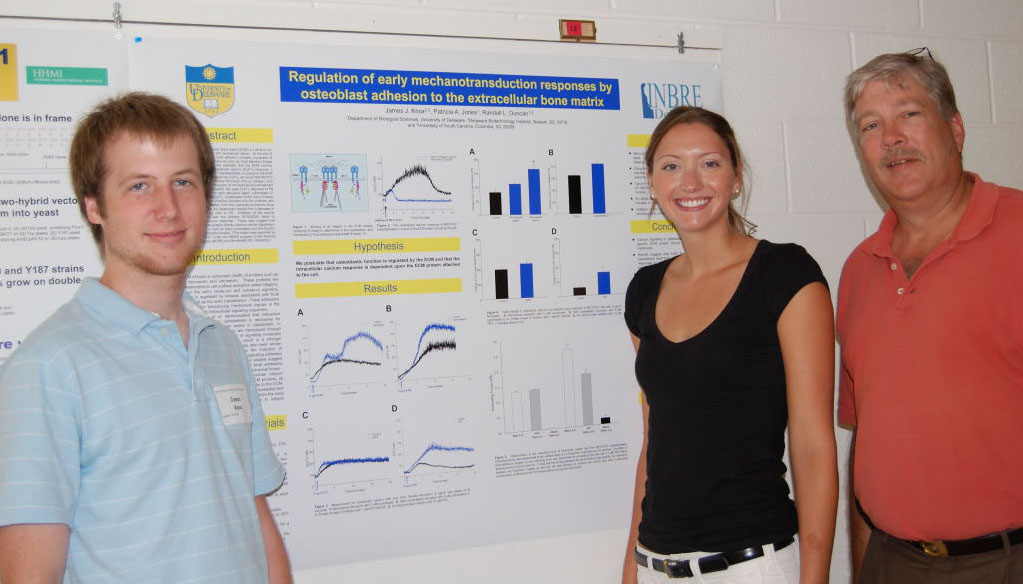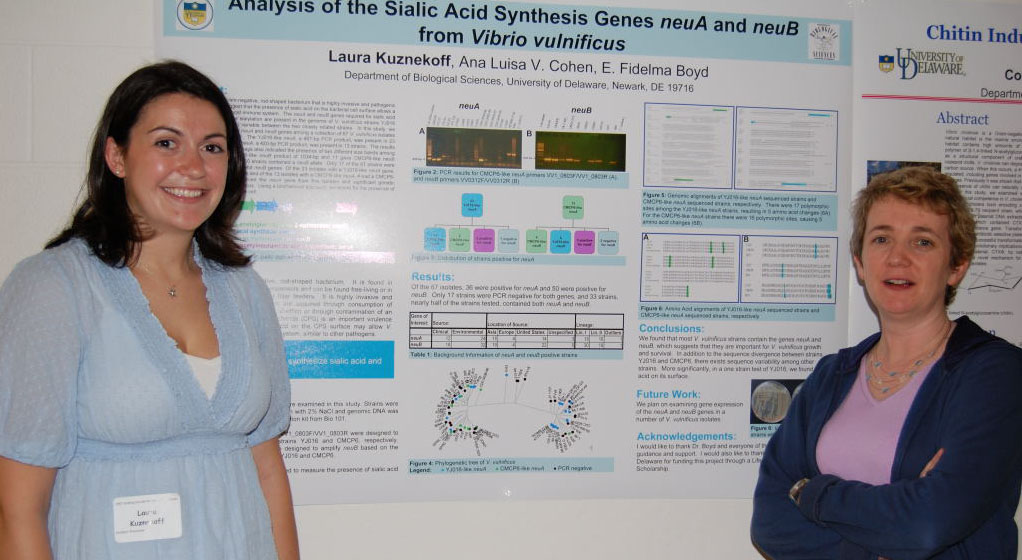Undergraduate Summer Research Symposium August 8, 2007
Ordered
alphabetically by student's last name
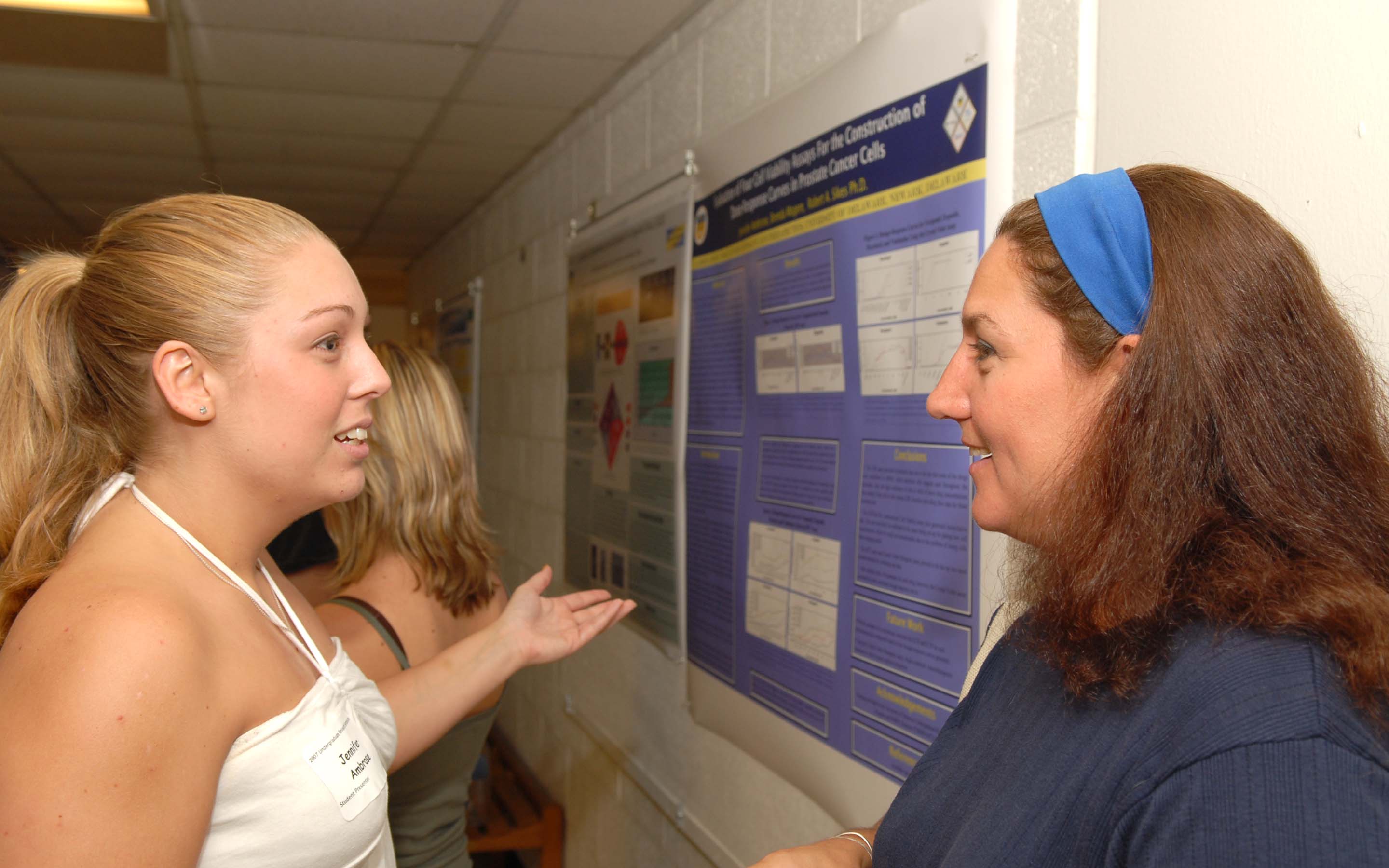 Evaluation of Four Cell Viability Assays for the Construction of Dose-response Curves in Prostate Cancer Cells Jennifer Ambrose, Brenda Mogere and Robert A. Sikes Department of
Biological Sciences, Laboratory for Cancer Ontogeny and Therapeutics,
Center for
Translational Cancer Research Prostate Cancer (PCa) is
the second leading cause of cancer
related death in US males with over 27,000 deaths this year alone
predominantly
from aggressive, metastatic disease that is invariably lethal. For this
reason,
the development and testing of novel therapeutics that target PCa cell
growth
and metastasis are critical. Several lead compounds known to be voltage
sensitive sodium channel (VSSC) blockers were shown by us to be more
than
6-fold better than the parent compound phenytoin at inhibiting PCa
growth in vitro. Unpublished observations
indicated that the compounds may be additive in nature. Other VSSC
blockers act
as histone deacetylases that often complement traditional chemotherapy.
By determining the dose-response of each
chemotherapeutic
drug individually and then combining treatments at the IC20, we hope to
deduce which
drugs have super-additive or synergistic effects. Our first objective
was to
determine the best method for assessing cell viability. We desired a
rapid,
easily controlled and highly reproducible test. LNCaP cells, an
androgen-sensitive PCa cell, were treated with varying concentrations
of a drug
three times over the duration of a week. Cell viability was assessed
using one
of four different assays. Through troubleshooting and manipulation of
the
different procedures, Crystal Violet assay was determined to be the
most
appropriate method to construct our dose-response curves. Funding
provided by
the
|
